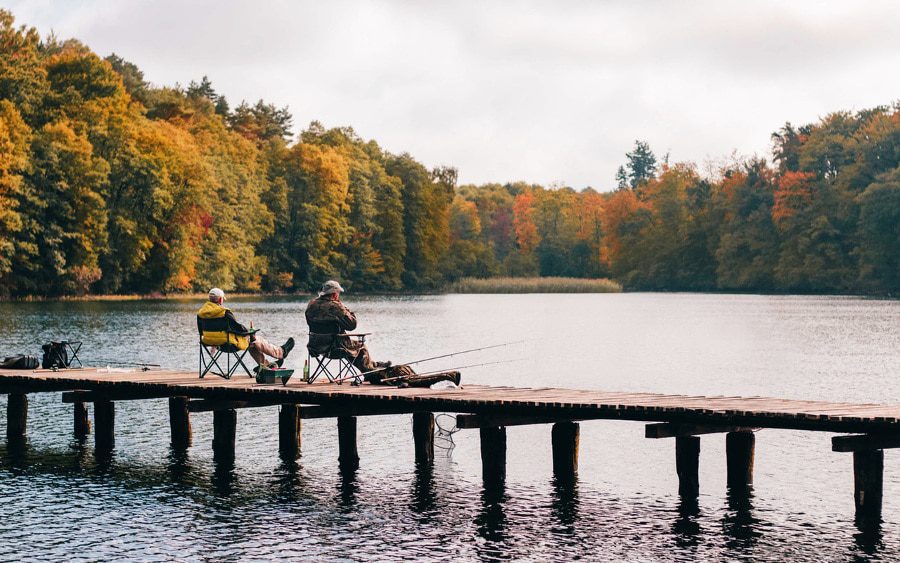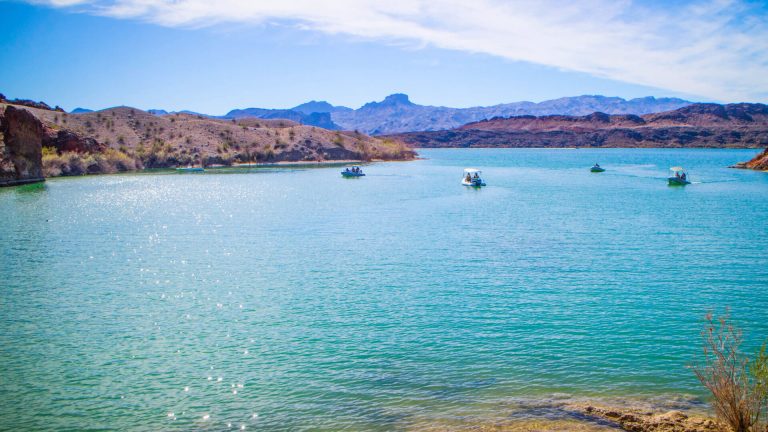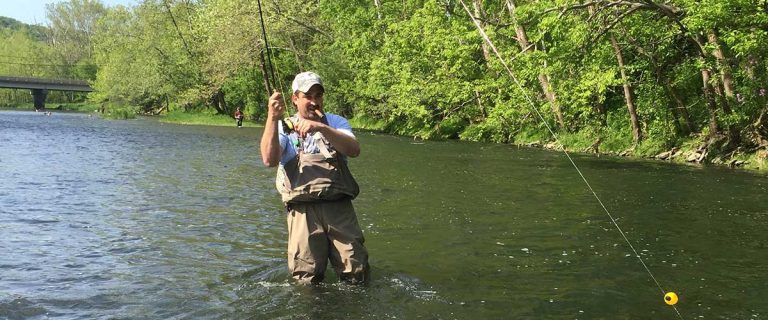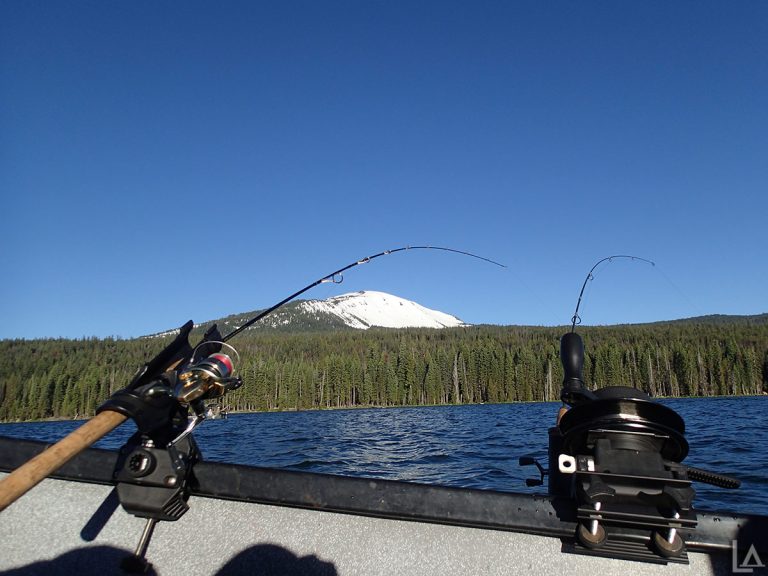Arizona’s desert reservoirs represent some of the most unique fishing environments in the United States. Nestled amid arid landscapes, these oases offer anglers exceptional opportunities to catch diverse species year-round. From the cold, trout-filled waters below dams to sun-warmed coves teeming with bass and crappie, Arizona’s desert lakes blend surprising biodiversity with spectacular scenery.
This comprehensive guide covers everything you need to know about fishing Arizona’s desert reservoirs, from license requirements and regulations to species identification and location recommendations.
Arizona’s Desert Reservoir Ecosystem
Desert reservoirs in Arizona present a fascinating paradox: thriving aquatic ecosystems surrounded by arid landscapes. These human-made lakes, primarily created through damming projects along the Salt, Colorado, and Verde River systems, have evolved into important recreational fisheries while serving their original purposes of water storage and flood control.
The unique characteristics of these reservoirs include:
- Dramatic temperature stratification (especially in summer)
- Fluctuating water levels based on irrigation needs and rainfall
- Diverse habitat zones from rocky structures to flooded vegetation
- Distinct fishing opportunities throughout different seasons
While many anglers associate Arizona with scorching temperatures, these reservoirs create microclimates that support both coldwater and warmwater species, often within the same body of water.
Fish Species Guide for Arizona Desert Reservoirs
Arizona’s reservoirs host a surprising diversity of fish species adapted to desert conditions. Here’s a comprehensive breakdown of what you might catch:
Bass Species
Largemouth Bass dominate many Arizona reservoirs and represent the most sought-after gamefish for many anglers. These fish thrive in the warmer sections of desert lakes, particularly around structure and in coves with flooded vegetation. The best seasons for largemouth fishing are spring and fall when they actively feed in shallow waters.
Smallmouth Bass prefer cooler, deeper waters with rocky structure. These hard-fighting fish share habitat with prized trout species in some reservoirs.
Striped Bass have established strong populations in larger Colorado River reservoirs since their introduction in the 1950s. These powerful fish can exceed 50 pounds, though most catches range from 10-15 pounds.
Trout Species
Surprisingly, cold-water trout represent some of Arizona’s most popular fishing targets. The Arizona Game and Fish Department maintains robust stocking programs throughout the state.
Rainbow Trout are regularly stocked in many reservoirs, particularly in the tailwaters below dams where cold water releases create ideal habitat. The Salt River below Saguaro Lake’s Stewart Mountain Dam offers exceptional trout fishing despite being surrounded by desert terrain.
Native Apache Trout (Arizona’s state fish) and Gila Trout represent unique fishing opportunities, though these endangered species are primarily found in White Mountain streams rather than desert reservoirs.
Other Popular Species
Black Crappie inhabit many Arizona reservoirs and provide excellent fishing opportunities, especially during spring when they move to shallow areas. These fish often travel in schools, making for consistent action once located.
Channel Catfish thrive in the warmer portions of desert reservoirs and rivers, offering excellent opportunities for night fishing.
Northern Pike and Walleye bring a taste of northern fishing to select Arizona waters, particularly at higher elevations.
Protected Native Species
Several endangered native fish species are protected in Arizona waters. If caught, these must be immediately released unharmed:
- Colorado River Pikeminnow
- Bonytail Chub
- Razorback Sucker
- Humpback Chub
| Species | Best Reservoirs | Peak Season | Preferred Habitat |
|---|---|---|---|
| Largemouth Bass | Saguaro Lake, Roosevelt Lake | Spring, Fall | Structure, vegetation, coves |
| Smallmouth Bass | Apache Lake, Lake Havasu | Year-round | Rocky points, deeper structure |
| Striped Bass | Lake Pleasant, Lake Powell | Year-round | Open water, deep channels |
| Rainbow Trout | Below dam tailwaters | Fall-Winter | Cool, oxygen-rich flows |
| Crappie | Roosevelt Lake, Lake Pleasant | Spring | Brush, submerged trees |
| Channel Catfish | Colorado River reservoirs | Summer | Deep holes, river channels |
Arizona Fishing License Requirements
Who Needs a License
All anglers aged 10 and older require a valid Arizona fishing license to fish any publicly accessible water in the state. This requirement applies to both residents and non-residents, regardless of fishing method.
Exemptions include:
- Youth under 10 years of age
- Blind residents
- Free Fishing Day participants (typically the first Saturday of National Fishing and Boating Week)
License Types and Costs
Arizona offers several license options to accommodate different needs:
| License Type | Resident Cost | Non-Resident Cost | Duration |
|---|---|---|---|
| General Fishing | $37 | $55 | 365 days |
| Combination Hunt and Fish | $57 | $160 | 365 days |
| Youth Combination (ages 10-17) | $5 | $5 | 365 days |
| Short-term Combo | $15/day | $20/day | Selected day(s) |
All fishing licenses include privileges that allow:
- Fishing from shore or boat on any portion of the Colorado River and impounded waters that form boundaries between Arizona and California or Nevada
- Use of two poles simultaneously
- Take of all fish species statewide, including at Community Fishing waters
- Take of crayfish, frogs, waterdogs, and softshell turtles
Special License Options
Arizona offers several specialized license options:
Complimentary Licenses: Available to qualifying individuals:
- Pioneer: Arizona residents 70+ years old with 25+ consecutive years of residency
- Disabled Veteran: Veterans with 100% service-connected disabilities and at least one year of Arizona residency
Lifetime Licenses: Available to Arizona residents, with fees varying by age. For example, lifetime general fishing licenses range from $296 (age 62+) to $666 (ages 14-29).
Where to Purchase Licenses
Licenses can be obtained through several convenient methods:
- Online at the Arizona Game and Fish Department website
- At Arizona Game and Fish Department offices
- From over 200 license dealers statewide, including sporting goods stores, tackle shops, and major retailers
For additional information on Arizona fishing licenses, visit US Fishing Licenses: Arizona or How Much is a Fishing License in Arizona.
Fishing Regulations for Arizona Desert Reservoirs
General Statewide Regulations
Hook and Line Methods:
- Two poles allowed per licensed angler
- Lines must be constantly attended and in immediate control
- Hooks, flies, or lures must be used in a manner that the fish voluntarily attempts to take it in its mouth
Bag and Possession Limits:
- Daily bag limits apply to 24-hour periods (midnight to midnight)
- Possession limits are typically twice the daily bag limits
- No person may possess more than two daily bag limits of any fish species
Once you’ve caught your daily limit for a species, you must:
- Stop fishing for that species
- Avoid culling or upgrading fish already kept
- Not fish for that species to help others reach their limits
Live Bait Regulations
Live baitfish regulations in Arizona are complex and vary by location:
- No live baitfish may be used or possessed in Coconino, Apache, Navajo, Pima, and Cochise counties
- Fathead minnows are permitted in La Paz, Maricopa, Pinal, and Yuma counties, plus certain waters outside these counties
- Golden shiners and goldfish are only permitted in specific waters including Lake Mead, the Colorado River downstream from Hoover Dam, and Alamo Lake
It is illegal to:
- Release live baitfish into Arizona waters
- Possess restricted baitfish in prohibited waters
- Sell live baitfish without a proper license
Top Desert Reservoir Fishing Spots
Salt River Chain
The reservoirs along the Salt River near Phoenix offer excellent fishing opportunities:
Saguaro Lake:
- Prime largemouth bass habitat with impressive average size
- Good crappie and catfish populations
- Beautiful canyon scenery with saguaro cacti dotting the shorelines
Below Stewart Mountain Dam:
- Year-round trout fishing in the cold tailwater
- Unique opportunity to catch trout in a desert environment
- Easy access from the Phoenix metro area
Colorado River Reservoirs
Lake Mead:
- Sprawling reservoir with excellent striped bass fishing
- Large populations of largemouth and smallmouth bass
- Catfish opportunities in warmer months
Lake Powell:
- Spectacular sandstone canyon scenery
- Outstanding bass fishing among submerged structure
- Striped bass schools in open water
White Mountains Lakes
While not desert reservoirs, these higher-elevation lakes offer a cooler alternative during summer heat:
Big Lake:
- Rainbow and Apache trout fishing
- Higher elevation (9,000 feet) provides relief from desert heat
- One of Arizona’s premier trout destinations
Show Low Lake:
- Mix of cold and warmwater species
- Walleye and largemouth bass complement trout populations
Tips for Desert Reservoir Fishing Success
Seasonal Strategies
Spring (March-May):
- Target bass in pre-spawn and spawn phases in shallow water
- Focus on crappie around brushy structure
- Fish early morning and evening as temperatures rise
Summer (June-September):
- Fish early morning and late evening to avoid extreme heat
- Target deeper structure for bass and crappie
- Focus on trout in tailwaters below dams where water stays cool
Fall (October-November):
- Excellent all-around fishing as temperatures moderate
- Bass actively feed to prepare for winter
- Trout become more active in cooling waters
Winter (December-February):
- Focus on slower presentations
- Target deeper water during cold fronts
- Excellent trout fishing continues in tailwaters
Conservation Considerations
Arizona’s unique desert ecosystems face multiple challenges, including:
- Invasive species impacts on native fish
- Water level fluctuations affecting spawning success
- Temperature changes due to climate variations
Responsible anglers can help through:
- Properly disposing of unwanted baitfish by burying them away from water
- Never releasing live fish between water bodies
- Reporting catches of endangered native species
- Practicing catch-and-release for sensitive populations
Best Fishing Spots in Arizona
For more detailed information on premier fishing locations, visit Best Fishing Spots in Arizona. This resource provides updated information on current conditions and hotspots.
Conclusion
Arizona’s desert reservoirs offer a unique fishing experience unlike anywhere else in America. The surprising diversity of species—from trophy largemouth bass to coldwater trout—creates year-round opportunities for anglers of all interests.
By understanding license requirements, regulations, and the specific characteristics of these fisheries, you can maximize your success while helping preserve these special resources for future generations. Whether you’re targeting monster stripers at Lake Powell or rainbow trout below a desert dam, Arizona’s reservoir fishing delivers memorable experiences amid breathtaking landscapes.
Before planning your next fishing adventure in Arizona, ensure you have the proper licensing by visiting US Fishing Licenses: Get Your Arizona Fishing License for the most current information.







